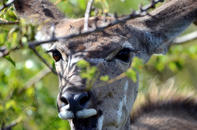Disruptive Cover
Kudu live in thicket habitats. They are very secretive and tend to freeze if startled allowing their disruptive colouration to blend them into their dappled environment.
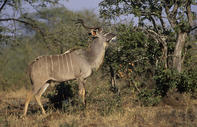
Disruptive markings are lines or marks that break the solid outline of an animal to camouflage them. The white chevron on the kudu’s face and the creamy stripes down its back also resemble the shafts of light penetrating a canopy of vegetation such as would be present in the environment where they live. When threatened away from cover, their first response is to dart into thick bush where their camouflage works best.
Follow Me
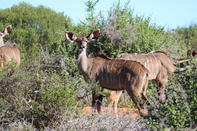
When kudu take flight from a threat, they lift their tails up revealing the fluffy white underside. This provides a beacon in the dense bush for other animals, particularly young to follow.
This is known as a ‘follow me’ sign. The white tail also acts as flash colouration. It attracts the attention of the predator that then focuses on the white tail as it pursues the animal. As soon as the kudu stops and drops its tail, the predator loses the obvious beacon it was following and will struggle to relocate its quarry.
A Loud Bark
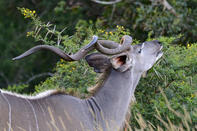
When kudu bulls flee through thicket habitats, they lift their noses to allow their horns to lie flat against their backs and thereby prevent them snagging on bushes. Since sound does not travel easily through dense mediums, kudu have huge ears to help them detect even the smallest of noises in the thickets where they live.
When listening, kudu focus their ears in the direction of the sound stimuli and in the process take on a curious expression. Kudu make use of a very loud, deep bark as an alarm call since low-frequency sound travels better in dense bush. Kudu make the loudest vocalization of all antelope.
Register the Height
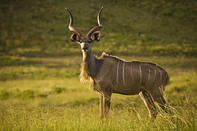
Well Adapted
